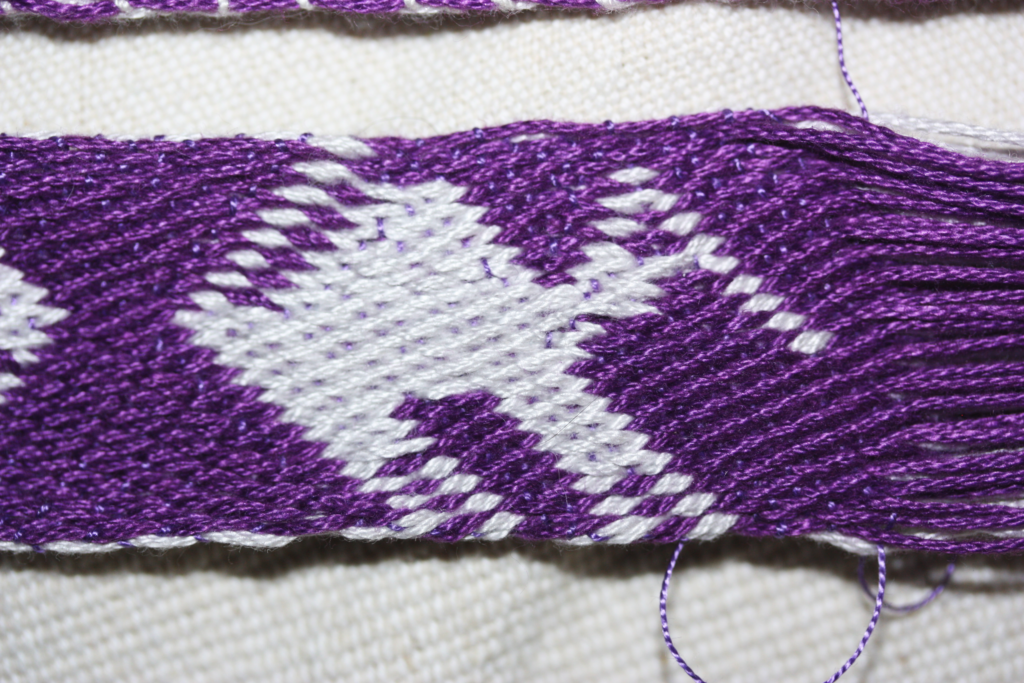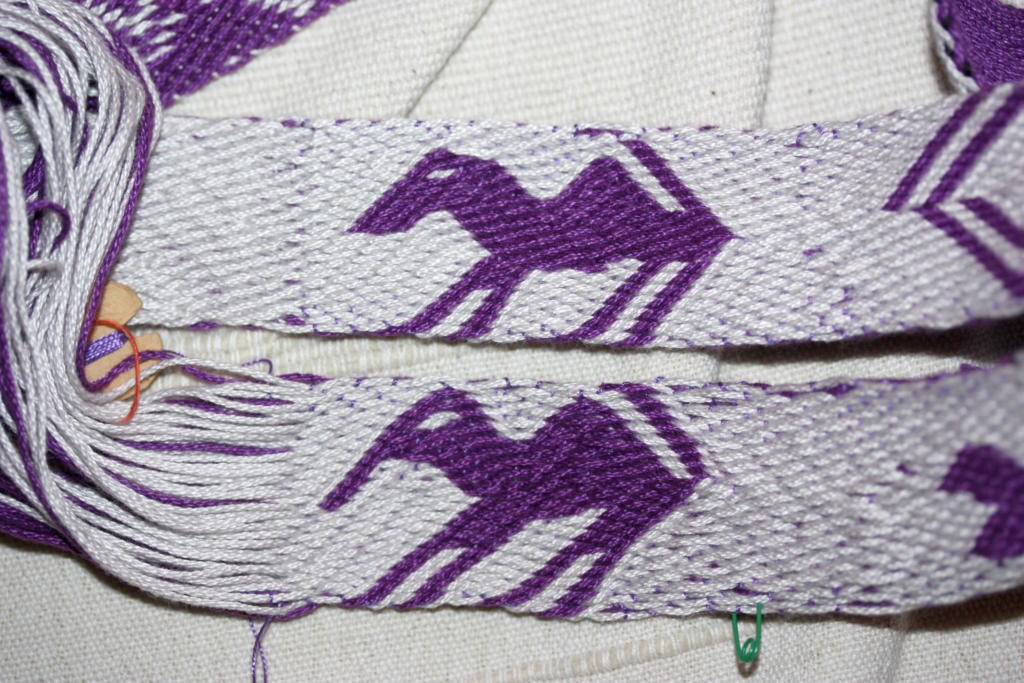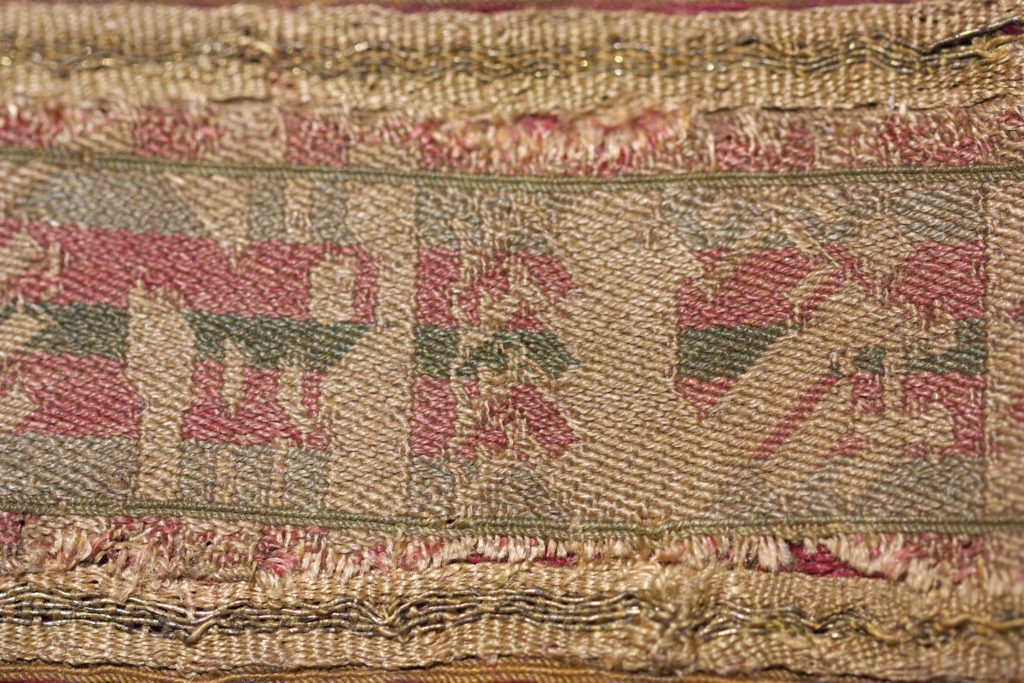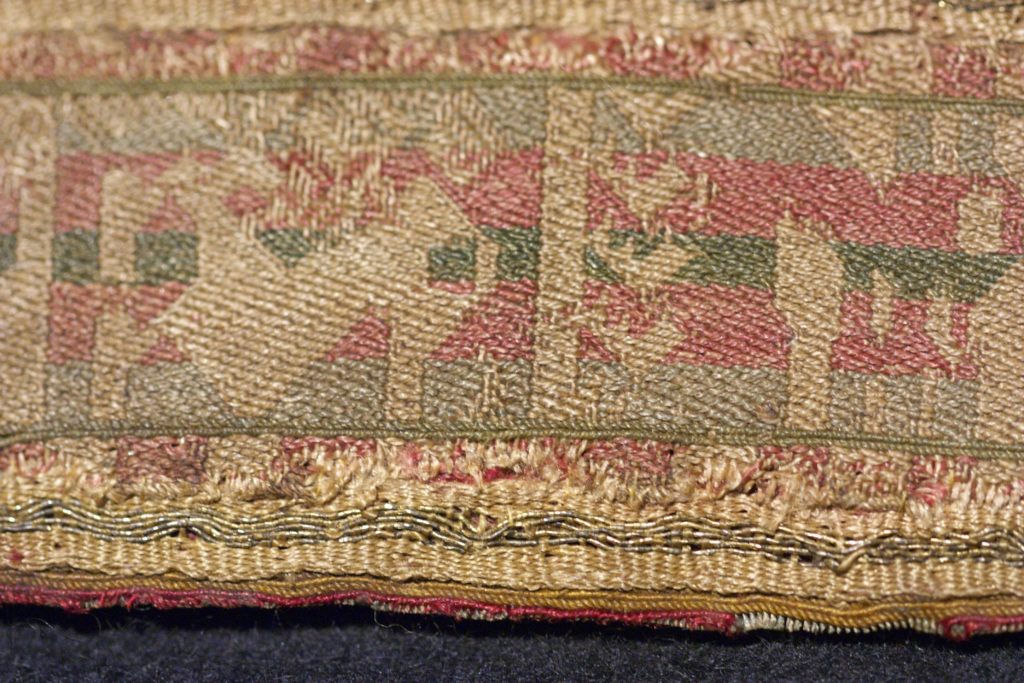Since the question came up - here's some more about the weaving knife from Dublin.
The information I have about is is from a single book:
James T. Lang et al: Viking Age Decorated Wood: A Study of Its Ornament and Style (Medieval Dublin Excavations, 1962-81: Series B, Band 1).
The knife has the catalogue number DW80 and the additional number (1887:143). It was found near Christ Church Cathedral in unknown context. Length ist 26.7 cm, depth 5.8 cm, thickness 1.3 cm. The original has lost its blade tip (it's broken off), so how exactly the blade ended is conjecture. There is no information about the kind of wood used for the knife.
Here's the knife I have, which was replicated by a friend, complete with the carvings:
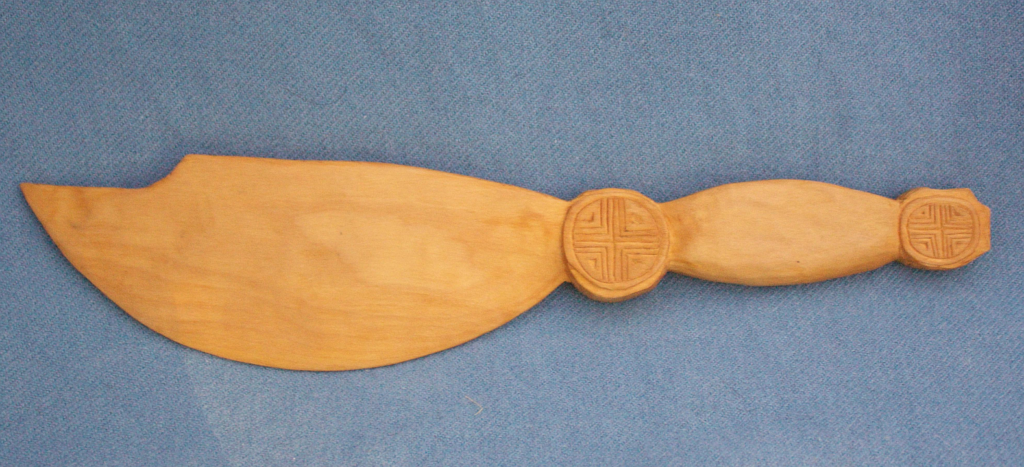
And here's the same photo, with the archaeological drawing from Viking Age Decorated Wood, p. 77, as an overlay:

As you can see, it's definitely a very good match (and you can also see the conjectured blade tip).
I haven't been able to find out more about the knife. Apparently, the excavation took place in 1972-1976, and it has not been published completely yet. Finds from the excavation date from the tenth to the early fourteenth century, with most of the evidence from the mid-tenth to the twelfth century. You can find out a little more about the excavation on this website from the Irish Heritage Council.
There is a second smaller knife that was found at Fishamble street, which has a similar overall form, including the cutout on the blade back at the tip. It was on display in the National Museum in Dublin, at least a few years ago; unfortunately, the museum has no online catalogue.
Though it is listed as "weaving knife" in the book, there has been quite a bit of discussion on whether it is one or not, and if yes, for what kind of weaving it was used. The shape especially seems to have caused doubts about its usefulness.
From my own experience working with it, I can only say: I love it. It's very useful for both pressing in the weft (with lots of fine control due to the curved blade), and the tip is handy for clearing the shed, picking out individual threads for checking, it can be used to create a brocading shed, and I also find it very useful when weaving back to undo mistakes. You can read more about my personal experience using it in this post here.
The information I have about is is from a single book:
James T. Lang et al: Viking Age Decorated Wood: A Study of Its Ornament and Style (Medieval Dublin Excavations, 1962-81: Series B, Band 1).
The knife has the catalogue number DW80 and the additional number (1887:143). It was found near Christ Church Cathedral in unknown context. Length ist 26.7 cm, depth 5.8 cm, thickness 1.3 cm. The original has lost its blade tip (it's broken off), so how exactly the blade ended is conjecture. There is no information about the kind of wood used for the knife.
Here's the knife I have, which was replicated by a friend, complete with the carvings:

And here's the same photo, with the archaeological drawing from Viking Age Decorated Wood, p. 77, as an overlay:

As you can see, it's definitely a very good match (and you can also see the conjectured blade tip).
I haven't been able to find out more about the knife. Apparently, the excavation took place in 1972-1976, and it has not been published completely yet. Finds from the excavation date from the tenth to the early fourteenth century, with most of the evidence from the mid-tenth to the twelfth century. You can find out a little more about the excavation on this website from the Irish Heritage Council.
There is a second smaller knife that was found at Fishamble street, which has a similar overall form, including the cutout on the blade back at the tip. It was on display in the National Museum in Dublin, at least a few years ago; unfortunately, the museum has no online catalogue.
Though it is listed as "weaving knife" in the book, there has been quite a bit of discussion on whether it is one or not, and if yes, for what kind of weaving it was used. The shape especially seems to have caused doubts about its usefulness.
From my own experience working with it, I can only say: I love it. It's very useful for both pressing in the weft (with lots of fine control due to the curved blade), and the tip is handy for clearing the shed, picking out individual threads for checking, it can be used to create a brocading shed, and I also find it very useful when weaving back to undo mistakes. You can read more about my personal experience using it in this post here.





 Photo from UNIMUS.no
Photo from UNIMUS.no Photo from UNIMUS.no
Photo from UNIMUS.no
